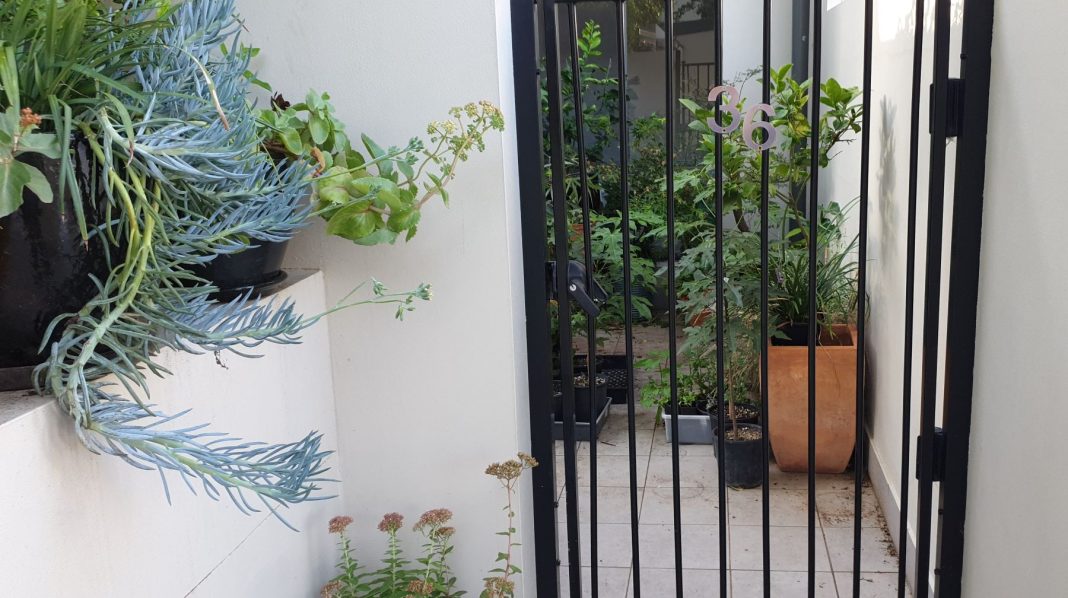Freezing winters and boiling summers, Canberra likes to take things to the extremes which can be hard not only on residents but also on our gardens. Considering our weather conditions and climate-wise principles when planning our gardens can result in lush landscapes that thrive the whole year round.
People often assume a climate-wise garden means a low-water garden, explains landscape architect Edwina Robinson. This isn’t always the case. It doesn’t have to be all cactus and gravel, it can be beautiful with lush trees and vegetation.
“It is okay to have an area closer to your house that you might use all the time that might have slightly higher water-use plants that are going to play the role of an evaporative cooler. If your house is well-designed you can pull that cool air into your house.”
While a climate-wise garden doesn’t have to be all about using as little water as possible, Ms Robinson says that we should consider that it isn’t guaranteed there will always be water when we turn on a tap.
“We need to be thinking about, can we have some of our water and store it in rainwater tanks? Can we store water in our soils? Can we store water in dry creek beds and frog ponds and kind of irrigate the landscape in a passive way rather than by turning on a tap?” she says.
Ms Robinson is the founder of The Climate Factory, a social enterprise she established in response to Australia experiencing its hottest and driest year on record in 2019. She envisioned a way to combine the Japanese Miyawaki method of dense planning, water harvesting and community involvement to create outdoor micro-forests in public spaces.

So far, The Climate Factory has aided in the establishment of five micro-forests, three around Canberra in Downer, Holt and Watson and two across the New South Wales border in Queanbeyan and Boorowa.
Passionate about spreading the idea of climate-wise gardens, Ms Robinson has been working with the ACT Government and nursery staff, landscape architects and designers to refine the Canberra Plant Selector.
“We’ve gone through the plants that we know are no longer suitable for Canberra, they might be weedy or they mightn’t cope with extreme dryness. We’re going through and changing some of those plants and are making other suggestions.”
The key to creating a climate-wise garden is to design it with the natural context in mind, particularly weather conditions and in a way that supports local plants and wildlife.
“I recently ran a workshop for the government, looking at some of the models that look at Canberra’s climate in the future, by 2050 it may be up to 2 degrees hotter. That is averages only, that doesn’t take into account extremes and could have 20 percent less rainfall,” says Ms Robinson.
Ideally, your garden will be a happy and functional space throughout the whole weather spectrum providing a cool comfortable environment in summer and sheltered, sunny spaces in winter.
A well-designed climate-wise garden will have spaces that provide shelter from rain and wind. For times of heavy rain, Ms Robinson says it can be tricky, but you want to slow down the water flow on the block. This can be achieved by terracing, good soil and limiting hard surfaces.
“In our modern lifestyle, we pave over everything, you actually don’t want to do that. You want to have your soil full of organics so it can absorb water rather than having it incredibly dry where the water just runs off the top of it and straight into our waterways and untreated.
In times of dry heat, Ms. Robinson advises planting densely, as plants act as nature’s evaporative coolers. To cool our environment and homes, she suggests having quality soil, mulching, drip irrigation and exploring water harvesting routes.
“As much as possible, slow down the water flow on your property and harvest it into the ground. This way, plants can naturally absorb the harvested water, including the water you’ve paid for, to support their growth process.”
Ms Robinson says creating a cooling climate-conscious environment in an apartment setting can be a bit trickier, as tenants often don’t have a lot of control of the vegetation that surrounds them.
“They could have lush plants on a balcony and there’s a lovely book by Indira Naidoo, The Edible Balcony, that shows you what you can create on a small balcony,” says Ms Robinson.
Not everyone can afford to create a beautiful, lush garden all at once, Ms Robinson recommends the way to start is by planting a tree in the right place.
“In winter you’re going to want some sunlight coming through, so it might be a hardy deciduous tree. Planting for the future, I recommend going to a nursery and not a hardware shop, nursery people really know our climate.”
Find out how to make a sustainable and flourishing climate-wise garden; climatefactory.com.au
Canberra Daily is keen to hear from you about a story idea in the Canberra and surrounding region. Click here to submit a news tip.


